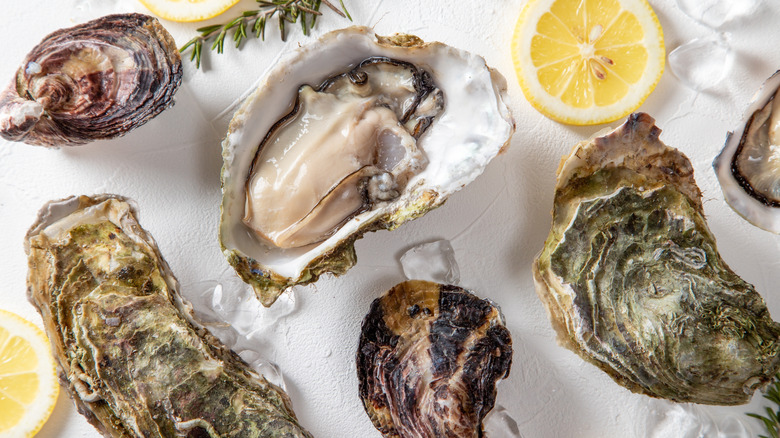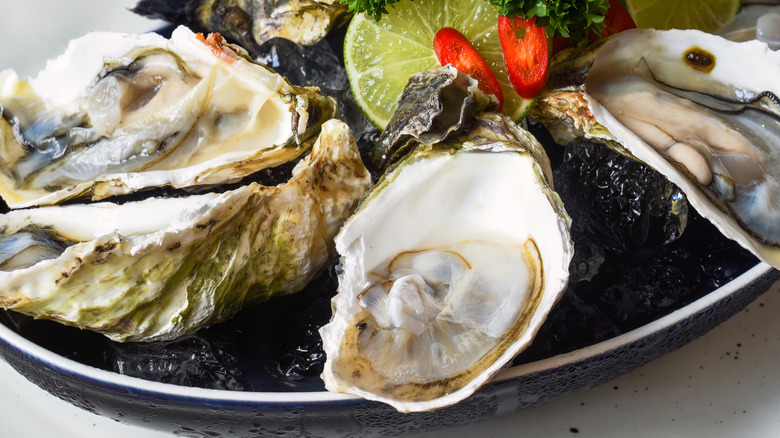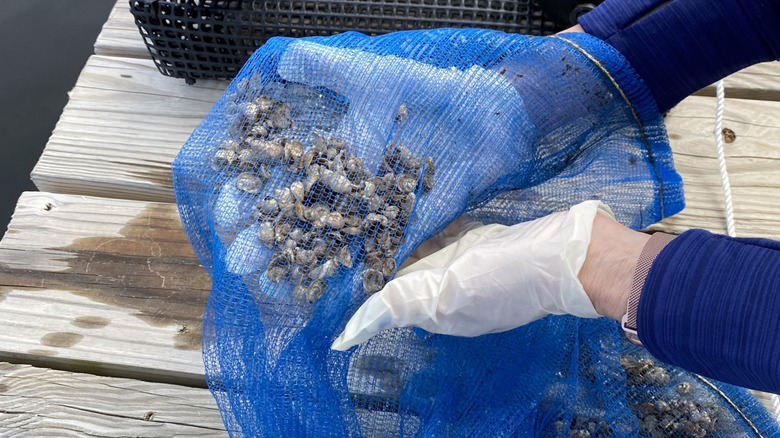The Gag-Inducing Reason You Should Avoid 'Creamy' Oysters
Some people adore raw oysters, and others question whether we should eat them at all. Love them or hate them, raw oysters are very popular during the summer months. This can be concerning, considering there's an age-old rule to avoid raw oysters in warm months that do not contain an "r." By that logic, from May through August, those salty beauties should be off the menu. Still, you can probably go to a high-end seafood restaurant and get a raw oyster any time. If you choose to, you'll need to be wary of creamy oysters.
No, not oysters served in a cream sauce. If you check your oysters and they have a creamy white looking sac on top that's small or covers pretty much the entire body, you should just send them back. While this isn't the only concerning thing to find in an oyster, this is one food faux pas that chefs really should catch. Some places do serve creamy oysters, though, so you'll need to be vigilant. If you eat one and find the taste strong, milky, and briny with an extra-soft texture, you might have gotten an off-season oyster. It's not that the oyster has putrified, and it's unlikely to do you serious harm, but once you find out why it has that texture, you may want to swear off oysters for a while.
Where does the creaminess come from?
A creamy texture in oysters is an inevitable part of their life cycle, but that doesn't mean you'll want to gulp them down. You see, oysters get fat, soft, and creamy during the spawning process, which occurs in the summer. At this time, their pH levels change, giving them a bold taste, and a white sac that grows large because the oyster's reproductive organs are maturing. Put simply, creamy oysters are getting ready to get it on. After doing so, their body will be withered and tough (also not fun to eat) because they have exerted so much energy during breeding.
Certain people really like the strong taste of spawning oysters, but you should still hesitate before consuming them. There's another reason why the flavor may change, and while a promiscuous oyster may sound icky, the other reason can be downright dangerous. During warmer months, there are higher levels of bacteria in the water, and wild spawning oysters are susceptible to those little foreign invaders. Remember that raw oysters were alive moments ago, so when you eat them, all that bacteria is still alive too. Although you will probably be fine, the risk a creamy summer oyster poses is probably not worth it.
Ask about triploid oysters
If you're dead set on eating oysters during the summer, fear not. There is a way to get your salty fix without stressing over bivalves getting freaky. Before ordering, ask your waiter if they are serving triploid oysters. These farmed oysters are born sterile, so they can't breed and won't ever go into spawn and get milky. They are also kept in cold controlled environments without fluctuating bacteria levels, meaning they are safer to eat than wild ones. If there are triploid farmed oysters on the menu, then you are good to feast to your heart's content.
Oysters can be so expensive, and unfortunately, triploid oysters are often more so. Because they can't be bred with each other, they are costlier to raise, and that price is passed on to the customer. However, these succulent shellfish have numerous health benefits, so reducing associated risks is worth it. Before you chow down during the summer, ask the right questions and look for a creamy swollen appearance.


